Becoming a Traditional Village: Heritage Protection and Livelihood Transformation of a Chinese Village
Abstract
1. Introduction
1.1. Background on Chinese Rural Development
1.2. What Are Traditional Villages?
2. Literature Review
2.1. Sustainability: Conceptions and Implementations
2.1.1. The Contemporary Understanding of Sustainability
2.1.2. Sustainability of Heritage Areas
2.2. Sustainable Development of Village
2.2.1. Holistic Protection of Natural Ecology
2.2.2. Design Education and Member Behavior
2.3. Heritage and Rural Tourism
2.3.1. Discover and Designate Heritage
2.3.2. Heritage Protection and Development
2.4. Transformation and Sustainability of Rural Livelihood
- (1).
- How do different agents in China designate a village to be a “Chinese traditional village” and what influence does the labeling bring to the sustainable development of a designated village?
- (2).
- How do local villagers adjust their thoughts and actions to engage in the practice of promoting local sustainable development and maintain the designation of “China’s traditional village”?
3. Fieldwork and Research Methods
3.1. Nalu Village
3.2. Material and Methods
4. Becoming a “Traditional Village”: The Protection and Development of Heritage
4.1. Beginning from an Initiation of Heritage Protection
4.1.1. The Baptism of a Flood to Nalu Village
4.1.2. Actions to Restore and Protect Ancient Buildings
4.2. Development and Innovation of Heritage: From the Perspective of Rural Tourism
4.2.1. Restoring the Traditional Space of Ancient Architecture
4.2.2. Continuous Improvement of Infrastructure Highlighting the Elements of Valued Traditions
4.2.3. Promoting Traditional Festival Activities and Upgrading Services
“I’m very optimistic about Nalu Village’s e-commerce business. I plan to create a variety of hand-made products and agricultural products here, which will be packaged and then sold online. I plan to develop local agricultural products here, such as local sugar, wine, sweet potato chips and so on. In the near future, we will have more unique products and plans to have them enter the market.”
4.3. Recognizing the Cultural Values of The Village
5. Diversifying Livelihood
6. Discussion and Conclusions
Author Contributions
Funding
Institutional Review Board Statement
Informed Consent Statement
Data Availability Statement
Acknowledgments
Conflicts of Interest
References
- Liu, B.; Ren, C. How to Develop Chinese Rural Tourism in the Context of New Urbanization? Asian Agric. Res. 2016, 8, 27–32. [Google Scholar]
- Gu, C.; Guan, W.; Liu, H. Chinese urbanization 2050: SD modeling and process simulation. Sci. China Earth Sci. 2017, 60, 1067–1082. [Google Scholar] [CrossRef]
- Notional Bureau Statistics. Statistical Bulletin of National Economic and Social Development of the People’s Republic of China in 2019. Available online: http://www.stats.gov.cn/tjsj/zxfb/202002/t20200228_1728913.html (accessed on 9 January 2021).
- Yulin, Z. Great Clearances: The Chinese Version of Enclosure Movement, 1991–2013. China Agric. Univ. J. Soc. Sci. Ed. 2015, 32, 19–45. [Google Scholar]
- Zhou, Z.P. China’s rural population hollowing out and its challenges. Popul. Res. 2008, 32, 45–52. [Google Scholar] [CrossRef]
- Chen, J.X.; Liu, W.Y. The formation form and governance path of rural hollowing in China. Acad. J. Zhongzhou. 2012, 05, 103–106. [Google Scholar]
- Jia-jun, X.; Meng, Z. The present situation and governance path of the rural population hollowing in China. Hubei Agric. Sci. 2020, 59, 208. [Google Scholar]
- Li, Y.C. Feng Jicai checks up folk culture resources: Feng Jicai, vice chairman of China Federation of Literary and Art Circles, launched the rescue project of Chinese folk cultural heritage. Democracy 2003, 04, 34–37. [Google Scholar]
- Ministry of Housing and Urban-Rural Development. Traditional Village Evaluation and Identification Index System (Trial). Available online: http://www.mohurd.gov.cn/wjfb/201208/t20120831_211267.html (accessed on 4 January 2021).
- Integrated Information Form. Available online: http://www.mohurd.gov.cn/ (accessed on 6 January 2021).
- World Heritage Centre—Official Site. Available online: https://whc.unesco.org/en/criteria/ (accessed on 9 February 2021).
- International Council on Monuments and Sites. Available online: https://www.icomos.org/en/about-icomos/mission-and-vision/icomos-mission?start=1 (accessed on 9 February 2021).
- Robertson, M. Sustainability Principles and Practice; Taylor & Francis: Abingdon, UK, 2017; p. 25. [Google Scholar]
- Caradonna, J.L. Sustainability: A History; Oxford University Press: Oxford, UK, 2014; pp. 11, 117. [Google Scholar]
- Spindler, E.A. The History of Sustainability the Origins and Effects of a Popular Concept. In Sustainability in Tourism: A Multidisciplinary Approach; Jenkins, I., Schröder, R., Eds.; Springer Fachmedien Wiesbaden: Wiesbaden, Germany, 2013; pp. 9–31. [Google Scholar]
- Cohen, T. Telemorphosis: Theory in the Era of Climate Change; Open Humanities Press: London, UK, 2012; Volume 1, p. 19. [Google Scholar]
- Caradonna, J.L. Routledge Handbook of the History of Sustainability; Taylor & Francis: Abingdon, UK, 2017; p. 37. [Google Scholar]
- Murzyn-Kupisz, M. Cultural, economic and social sustainability of heritage tourism: Issues and challenges. Econ. Environ. Stud. 2012, 12, 113–133. [Google Scholar]
- Pizam, A. Tourism manpower: The state of the art. J. Travel Res. 1982, 21, 5–9. [Google Scholar] [CrossRef]
- Vaughan, D.R. The cultural heritage: An approach to analyzing income and employment effects. J. Cult. Econ. 1984, 8, 1–36. [Google Scholar] [CrossRef]
- Milewski, D. Mnożnik turystyczny. In Ekonomika Turystyki; Panasiuk, A., Ed.; PWN: Warszawa, Poland, 2007; pp. 54–59. [Google Scholar]
- Murzyn-Kupisz, M. Sustainable approaches to natural environment and cultural heritage. Two sides of the same coin? Econ. Environ. Stud. 2010, 10, 379–397. [Google Scholar]
- Murzyn-Kupisz, M. The socio-economic impact of built heritage projects conducted by private investors. J. Cult. Herit. 2013, 14, 156–162. [Google Scholar] [CrossRef]
- Platje, J. Institutional Capital-Creating Capacity and Capabilities for Sustainable Development; Wydawnictwo Uniwersytetu Opolskiego: Opole, Poland, 2011. [Google Scholar]
- Aas, C.; Ladkin, A.; Fletcher, J. Stakeholder collaboration and heritage management. Ann. Tour. Res. 2005, 32, 28–48. [Google Scholar] [CrossRef]
- Chhabra, D. Sustainable Marketing of Cultural and Heritage Tourism; Routledge: Boca Raton, FL, USA, 2010. [Google Scholar]
- Saipradist, A.; Staiff, R. Crossing the cultural divide: Western visitors and interpretation at Ayutthaya World Heritage Site, Thailand. J. Herit. Tour. 2008, 2, 211–224. [Google Scholar] [CrossRef]
- Barthel-Bouchier, D. Cultural Heritage and the Challenge of Sustainability; Routledge: Boca Raton, FL, USA, 2016. [Google Scholar]
- Rakic, T.; Chambers, D. World heritage: Exploring the tension between the national and the ‘universal’. J. Herit. Tour. 2008, 2, 145–155. [Google Scholar] [CrossRef]
- Timothy, D.J. Cultural heritage and tourism: An introduction; Channel View Publications: Bristol, UK, 2011; Volume 4. [Google Scholar]
- Throsby, D. Tourism, heritage and cultural sustainability: Three golden rules. In Cultural Tourism and Sustainable Local Development; Ashgate Publishing: Aldershot, UK, 2009. [Google Scholar]
- Xiao, Y.; Zhao, J.; Sun, S.; Guo, L.; Axmacher, J.; Sang, W. Sustainability Dynamics of Traditional Villages: A Case Study in Qiannan Prefecture, Guizhou, China. Sustainability 2020, 12, 314. [Google Scholar] [CrossRef]
- Maikhuri, R.K.; Semwal, R.L.; Rao, K.S.; Nautiyal, S.; Saxena, K.G. Eroding traditional crop diversity imperils the sustainability of agricultural systems in Central Himalaya. Curr. Sci. India 1997, 73, 777–782. [Google Scholar]
- Liu, S.; Ge, J.; Li, W.; Bai, M. Historic environmental vulnerability evaluation of traditional villages under geological hazards and influencing factors of adaptive capacity: A district-level analysis of Lishui, China. Sustainability 2020, 12, 2223. [Google Scholar] [CrossRef]
- Huang, Q.Y.; Xi, X.S. Vernacular Landscape Leading the Way: The Holistic Protection and Revival of Hani’s Ancient Village under the Background of Yuanyang Terraced Fields’ Register on the World Heritage, Advanced Materials Research, 2014; Trans Tech Publications: Stafa-Zurich, Switzerland, 2014; pp. 2468–2488. [Google Scholar]
- Liu, M. The Protection and Heritage Strategy of Chongqing Mountain Traditional Villages—An Example of Xiushan County Zhongling Town Chenjiaba Traditional Village Protection Planning, Applied Mechanics and Materials, 2014; Trans Tech Publications: Stafa-Zurich, Switzerland; pp. 348–355.
- Čustović, H.; Kovačević, Z.; Tvica, M. Rural Ecology; University of Sarajevo: Sarajevo, Bosnia and Herzegovina, 2013. [Google Scholar]
- Chang, K.; Chou, P. Integrating Intelligent Living, Production and Disaster Prevention into a Sustainable Community Assessment System for the Rural Village Regeneration in Taiwan, 2011 International Conference on Multimedia Technology, 2011; IEEE: New York, NY, USA, 2011; pp. 6410–6413. [Google Scholar]
- Dumreicher, H. Chinese villages and their sustainable future: The European Union-China-Research Project “SUCCESS”. J. Environ. Manag. 2008, 87, 204–215. [Google Scholar] [CrossRef]
- Chambers, R.; Conway, G. Sustainable Rural Livelihoods: Practical Concepts for the 21st Century; Institute of Development Studies (UK): Falmer, UK, 1992. [Google Scholar]
- Ma, J.; Zhang, J.; Li, L.; Zeng, Z.; Sun, J.; Zhou, Q.B.; Zhang, Y. Study on livelihood assets-based spatial differentiation of the income of natural tourism communities. Sustainability 2018, 10, 353. [Google Scholar] [CrossRef]
- Xia, B.; Zuo, J.; Skitmore, M.; Buys, L.; Hu, X. Sustainability literacy of older people in retirement villages. J. Aging Res. 2014, 2014, 919054. [Google Scholar] [CrossRef]
- Fan, K.; Zhong, X.; Xu, Y.; Zhang, B. Constructing an Efficient Model to Inspire Design Education Sustainability in Rural Areas. Sustainability 2018, 10, 3562. [Google Scholar] [CrossRef]
- Hlalele, D. Sustainable rural learning ecologies-a prolegomenon traversing transcendence of discursive notions of sustainability, social justice, development and food sovereignty. Td: J. Transdiscipl. Res. S. Afr. 2013, 9, 561–580. [Google Scholar] [CrossRef][Green Version]
- Akpinar, N.; Talay, I.; Ceylan, C.; Gündüz, S. Rural women and agrotourism in the context of sustainable rural development: A case study from Turkey. Environ. Dev. Sustain. 2005, 6, 473–486. [Google Scholar] [CrossRef]
- Henderson, J. Heritage, Identity and Tourism in Hong Kong Joan Henderson. Int. J. Herit. Stud. 2001, 7, 219–235. [Google Scholar] [CrossRef]
- Harvey, D.C. Heritage Pasts and Heritage Presents: Temporality, meaning and the scope of heritage studies. Int. J. Herit. Stud. 2001, 7, 319–338. [Google Scholar] [CrossRef]
- Nijkamp, P.; Riganti, P. Assessing cultural heritage benefits for urban sustainable development. Int. J. Serv. Technol. Manag. 2008, 10, 29–38. [Google Scholar] [CrossRef]
- UNESCO. Available online: https://whc.unesco.org/en/convention/ (accessed on 13 February 2021).
- UNESCO. Available online: https://whc.unesco.org/en/decisions/1217/ (accessed on 13 February 2021).
- UNESCO. Available online: https://whc.unesco.org/en/decisions/5197/ (accessed on 13 February 2021).
- World Heritage Centre—Official Site. Available online: http://whc.unesco.org/en/list/stat (accessed on 4 January 2021).
- Williams, K. The Meanings and Effectiveness of World Heritage Designation in the USA; Taylor Francis Group: Abingdon, UK, 2004. [Google Scholar]
- Council of Europe. Available online: https://www.coe.int/en/web/landscape (accessed on 13 February 2021).
- Lowenthal, D. The Heritage Crusade and the Spoils of History; Cambridge University Press: Cambridge, UK, 1998; p. 226. [Google Scholar]
- Hall, S. Representation: Cultural Representations and Signifying Practices; Sage: Thousand Oaks, CA, USA, 1997; Volume 2, p. 61. [Google Scholar]
- McAreavey, R.; McDonagh, J. Sustainable rural tourism: Lessons for rural development. Sociol. Rural. 2011, 51, 175–194. [Google Scholar] [CrossRef]
- Wheeller, B. Heritage Tourists: Responsible, (f)or What? Tour. Recreat. Res. 2009, 34, 84–87. [Google Scholar] [CrossRef]
- Zhang, C.W. On the improvement of the legal system of cultural heritage protection. Shandong Soc. Sci. 2011, 10, 81–84. [Google Scholar]
- Serraino, M.; Lucchi, E. Energy efficiency, heritage conservation, and landscape integration: The case study of the san martino castle in parella (turin, italy). Energy Procedia 2017, 133, 424–434. [Google Scholar] [CrossRef]
- Amir, A.F.; Ghapar, A.A.; Jamal, S.A.; Ahmad, K.N. Sustainable tourism development: A study on community resilience for rural tourism in Malaysia. Procedia-Soc. Behav. Sci. 2015, 168, 116–122. [Google Scholar] [CrossRef]
- Coccossis, H.; Nijkamp, P. Planning for Our Cultural Heritage; Avebury: Aldershot, UK, 1995. [Google Scholar]
- Richards, G.; Hall, D.R. Tourism and Sustainable Community Development; Psychology Press: East Sussex, UK, 2003; Volume 7. [Google Scholar]
- Wikipédia. Available online: https://fr.wikipedia.org/wiki/Les_Plus_Beaux_Villages_de_la_Terre (accessed on 12 February 2021).
- The Federation of the Most Beautiful Villages of the World. Available online: https://lpbvt.org/ (accessed on 12 February 2021).
- United Nations. Ending Poverty. Available online: https://www.un.org/en/sections/issues-depth/poverty/index.html (accessed on 3 January 2021).
- Peer, A. Global Poverty: Facts, FAQs, and How to Help. Available online: https://www.worldvision.org/sponsorship-news-stories/global-poverty-facts (accessed on 10 January 2021).
- Kharas, H.; Hamel, K. Turning back the Poverty Clock: How will COVID-19 impact the world’s poorest people. Brook. Retrieved Novemb. 2020, 18, 2020. [Google Scholar]
- National Bureau of Statistics. Data of 2019. Available online: https://data.stats.gov.cn/easyquery.htm?cn=C01&zb=A0301&sj=2019 (accessed on 6 January 2021).
- Gao, J.; Wu, B. Revitalizing traditional villages through rural tourism: A case study of Yuanjia Village, Shaanxi Province, China. Tour. Manag. 2017, 63, 223–233. [Google Scholar] [CrossRef]
- Butler, L.M.; Mazur, R.E. Principles and processes for enhancing sustainable rural livelihoods: Collaborative learning in Uganda. Int. J. Sustain. Dev. World Ecol. 2007, 14, 604–617. [Google Scholar] [CrossRef]
- Li, Y.; Fan, P.; Liu, Y. What makes better village development in traditional agricultural areas of China? Evidence from long-term observation of typical villages. Habitat. Int. 2019, 83, 111–124. [Google Scholar] [CrossRef]
- Shi, T.; Gill, R. Developing effective policies for the sustainable development of ecological agriculture in China: The case study of Jinshan County with a systems dynamics model. Ecol. Econ. 2005, 53, 223–246. [Google Scholar] [CrossRef]
- Xue, L.; Weng, L.; Yu, H. Addressing policy challenges in implementing Sustainable Development Goals through an adaptive governance approach: A view from transitional China. Sustain. Dev. 2018, 26, 150–158. [Google Scholar] [CrossRef]
- Cherni, J.A.; Hill, Y. Energy and policy providing for sustainable rural livelihoods in remote locations—The case of Cuba. Geoforum 2009, 40, 645–654. [Google Scholar] [CrossRef]
- Juanwen, Y.; Quanxin, W.; Jinlong, L. Understanding indigenous knowledge in sustainable management of natural resources in China: Taking two villages from Guizhou Province as a case. For. Policy Econ. 2012, 22, 47–52. [Google Scholar] [CrossRef]
- Vitasurya, V.R. Local wisdom for sustainable development of rural tourism, case on Kalibiru and Lopati village, province of Daerah Istimewa Yogyakarta. Procedia-Soc. Behav. Sci. 2016, 216, 97–108. [Google Scholar] [CrossRef]
- Scoones, I. Livelihoods perspectives and rural development. J. Peasant. Stud. 2009, 36, 171–183. [Google Scholar] [CrossRef]
- Scoones, I. Sustainable Livelihoods and Rural Development; Practical Action Publishing: Rugby, UK, 2015; p. xv. [Google Scholar]
- [Guangxi Story] Episode 60: The Legacy of Nalu Zhu Family in Xiangzhou. Available online: http://tv.gxnews.com.cn/staticpages/20170416/newgx58f2ea4c-16105431.shtml (accessed on 6 January 2021).
- Friedman, E.; Pickowicz, P.G.; Selden, M. Revolution, Resistance, and Reform in Village China; Yale University Press: London, UK, 2005. [Google Scholar]
- Zhu clan Committee of Xiangzhou. Zhu’s Genealogy: The Xiangzhou Lineage of King Jingjiang of Ming Dynasty; Zhu clan Committee of Xiangzhou: Zhuhai, China, 2015; pp. 192–194. [Google Scholar]
- Stojević, I. Village and Heritage in China: A Discussion on the Influence and Future of Heritage Work in Rural Areas. Heritage 2019, 2, 666–680. [Google Scholar] [CrossRef]
- Liu, P.L. Ancient Villages: A Harmonious Space for People to Gather; SDX Joint Publishing Company: Shanghai, China, 1998. [Google Scholar]
- MOHURD & NCHA. The Seventh Batch of Famous Towns & Villages in History & Culture. Available online: http://www.mohurd.gov.cn/wjfb/201901/t20190130_239368.html (accessed on 6 January 2021).
- Xiao, Z.H. Protection and development of Traditional Villages: “China Plan” Won World Praise. China Construction Daily, 5 September 2019. [Google Scholar]
- Selman, P. What do we mean by sustainable landscape? Sustain. Sci. Pract. Policy 2008, 4, 23–28. [Google Scholar]
- Cai Gel. Walking into the Ancient Village of Nalu, Meet Han Fu of Ming Dynasty. Available online: https://www.meipian.cn/en79q7l (accessed on 10 January 2021).
- Sagu Baihe Lucia. Go to an Old Village at the Weekend. Available online: https://www.jianshu.com/p/5dccb455b851 (accessed on 10 January 2021).
- Nitzky, W. Mediating Heritage Preservation and Rural Development: Ecomuseum Development in China. Urban Anthr. Stud. Cult. Syst. World Econ. Dev. 2012, 41, 367–417. [Google Scholar]
- Chen, Z.; Ren, X.; Zhang, Z. Cultural heritage as rural economic development: Batik production amongst China’s Miao population. J. Rural Stud. 2020, 81, 182–193. [Google Scholar] [CrossRef]
- Dawe, S. Valuing heritage tourism. In Investing in Success: Heritage and the UK Tourism Economy; Heritage Lottery Fund: London, UK, 2010. [Google Scholar]
- Luo, C.J. From family and regional identity to “community of common destiny”: The construction of embedded ethnic relationship in traditional village. Guangxi Ethn. Stud. 2020, 2, 32–40. [Google Scholar]
- Saidi, U. Repackaging “traditional” architecture of the African Village in Zimbabwe. In Urban and Architectural Heritage CONSERVATION within Sustainability; IntechOpen: London, UK, 2018; p. 12. [Google Scholar]
- Girard, L.F.; Nijkamp, P. Narrow escapes: Pathways to sustainable Local cultural tourism. In Cultural Tourism and Sustainable Local Development; Girard, L.F., Nijkamp, P., Eds.; Ashgate Publishing: Farnham, UK, 2009; pp. 1–9. [Google Scholar]
- XuDong, Z. How could be encountered between the earthbound society and tourism: A new development of rural revitalization under the perspective of cultural transformation. J. Orig. Ecol. Natl. Cult. 2020, 12, 67–74. [Google Scholar]
- Chmutina, K.; Tandon, A.; Kalkhitashvili, M.; Tevzadze, M.; Kobulia, I. Connecting heritage, vulnerabilities and capacities through a participatory game. Int. J. Disast. Risk Res. 2021, 53, 102005. [Google Scholar]
- Smith, L. Uses of Heritage; Taylor & Francis: Abingdon, UK, 2006; p. 4. [Google Scholar]
- Zhang, Y.; Wu, Z. The reproduction of heritage in a Chinese village: Whose heritage, whose pasts? Int. J. Herit. Stud. IJHS 2016, 22, 228–241. [Google Scholar] [CrossRef]


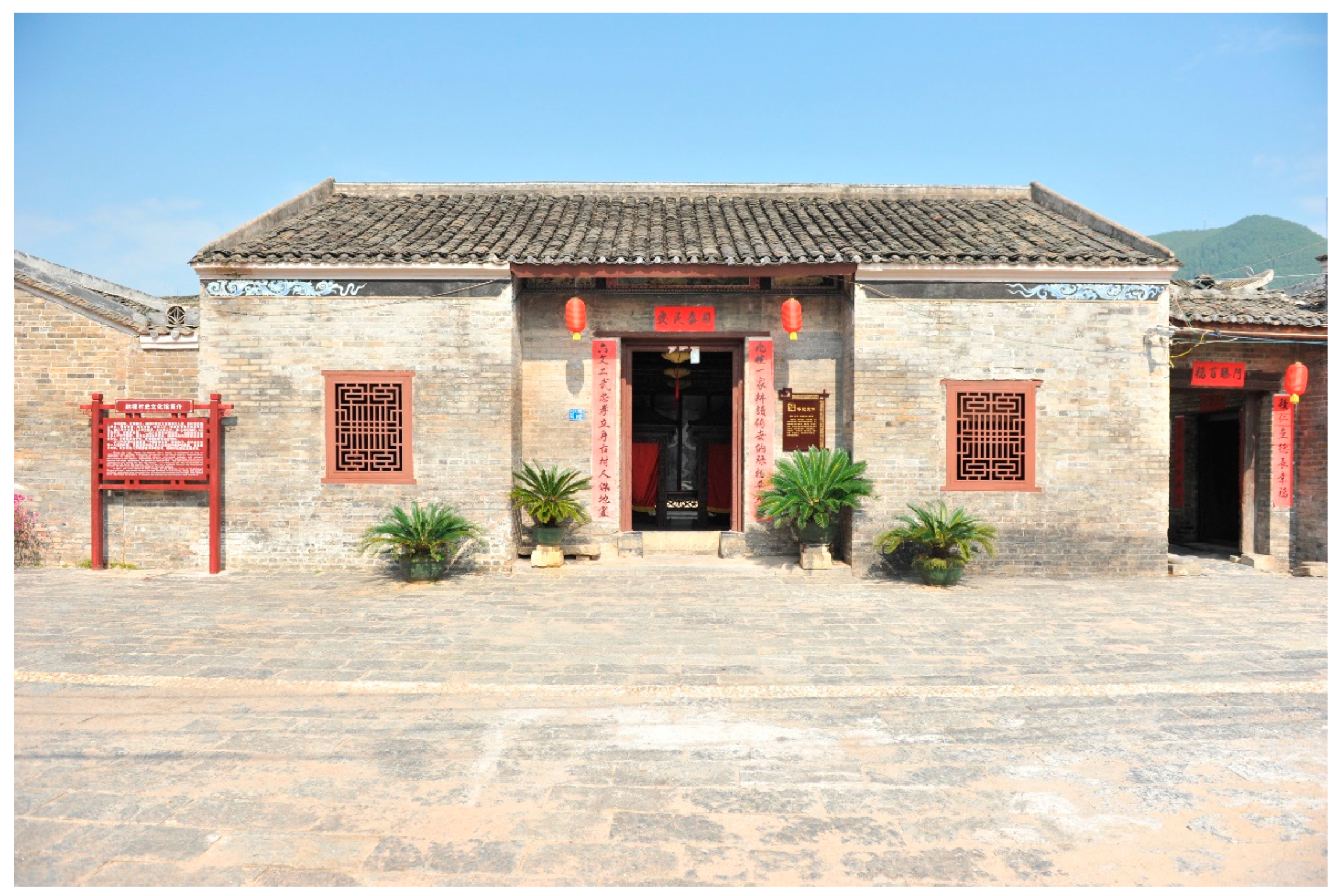
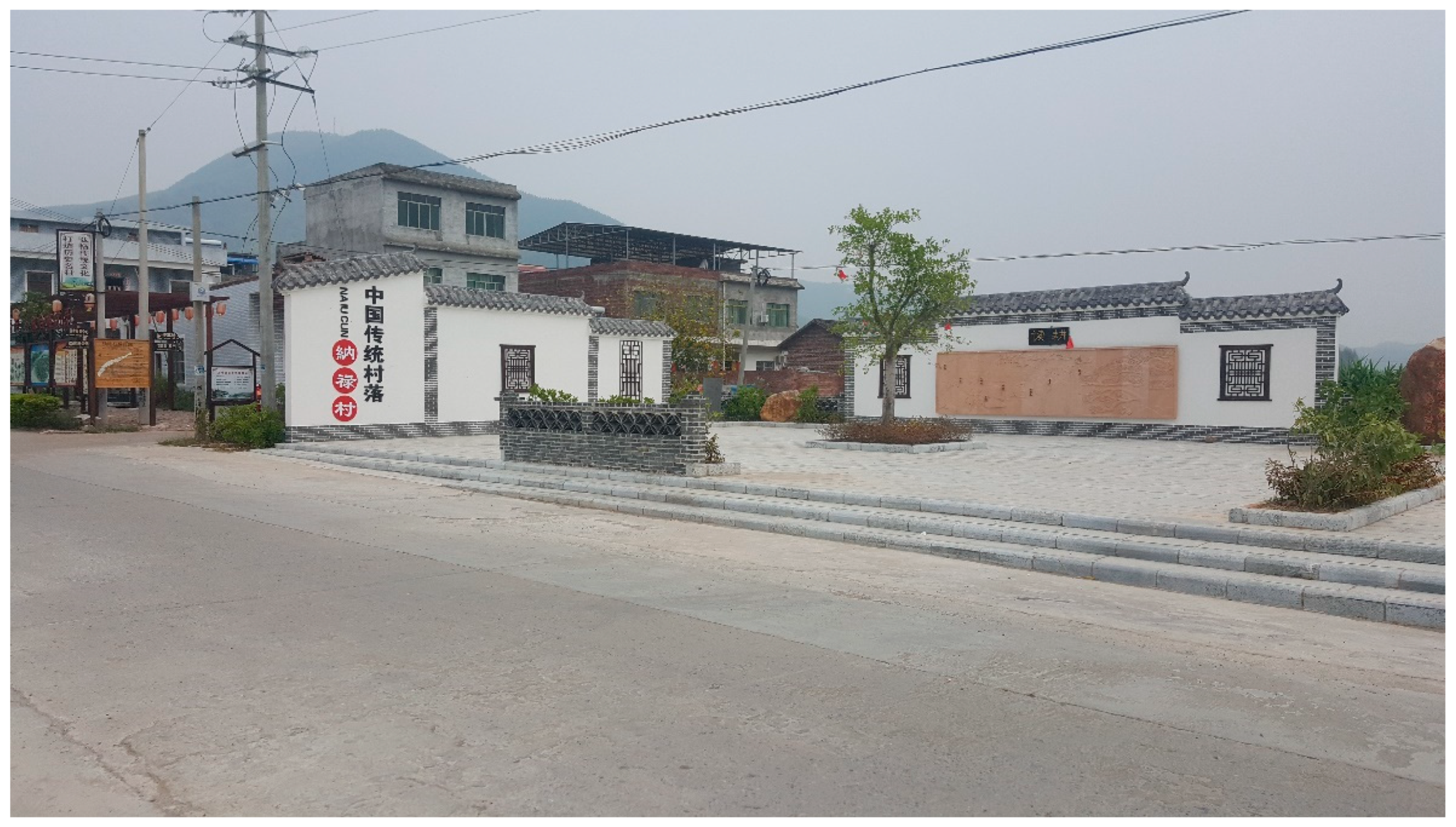
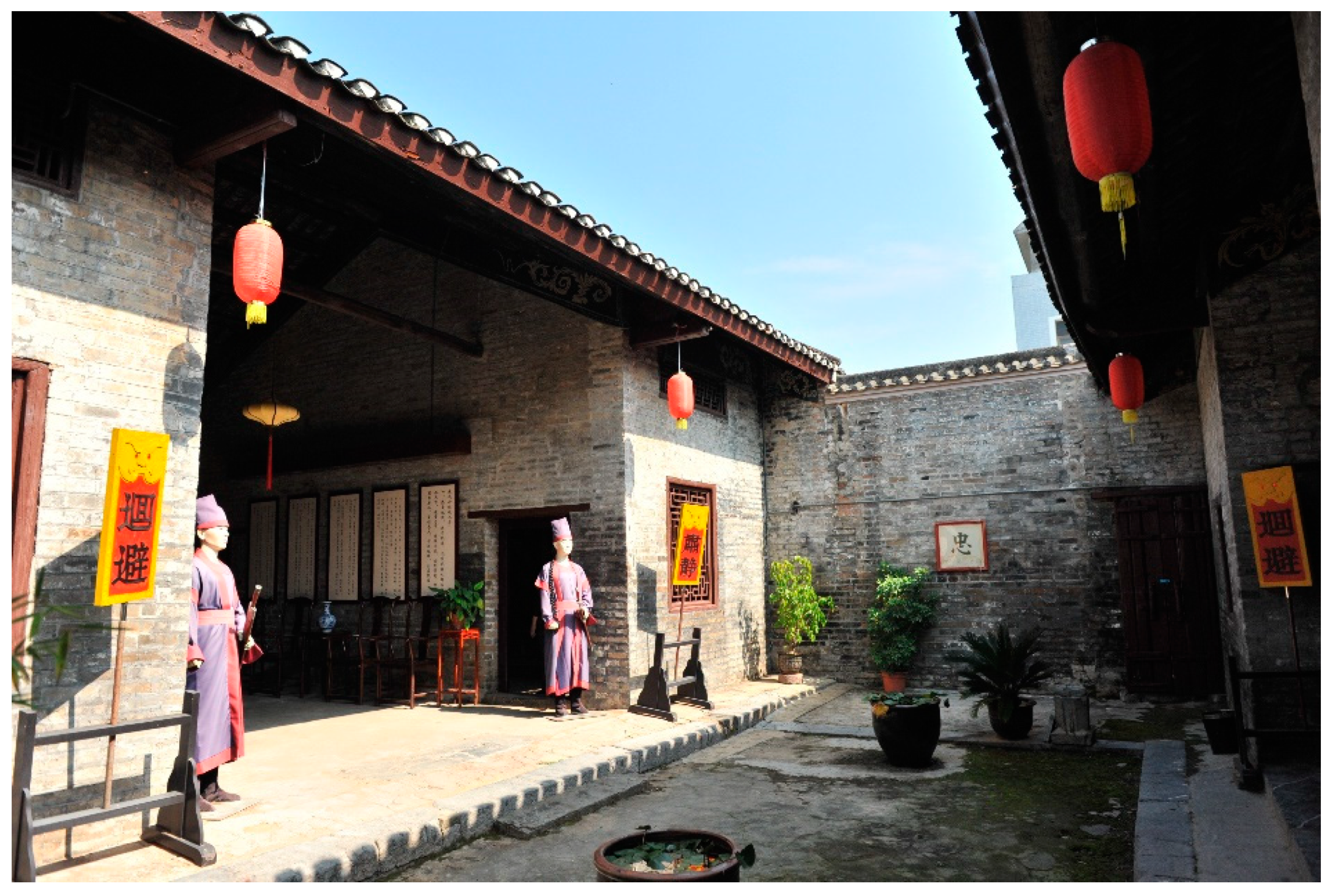
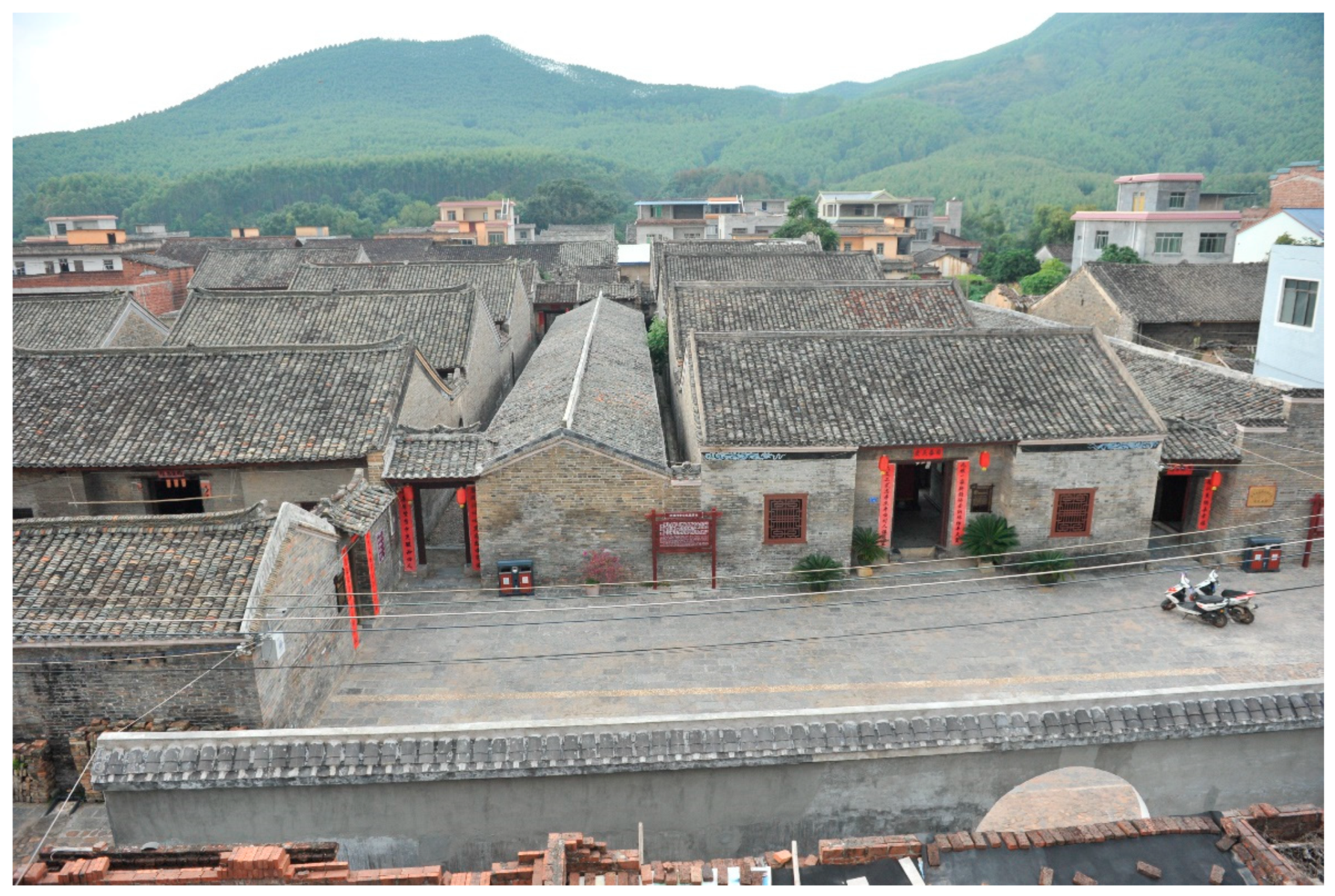

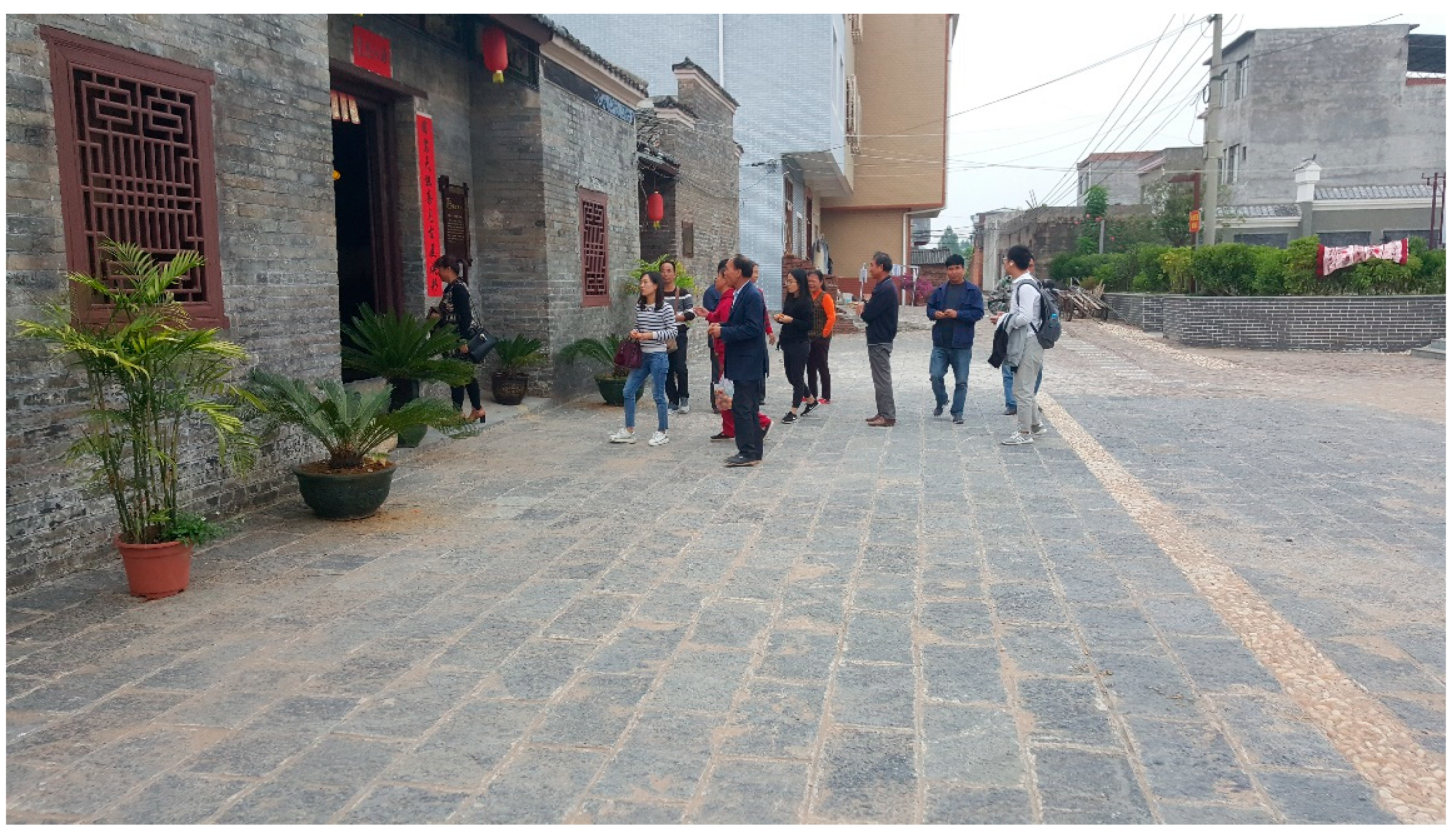
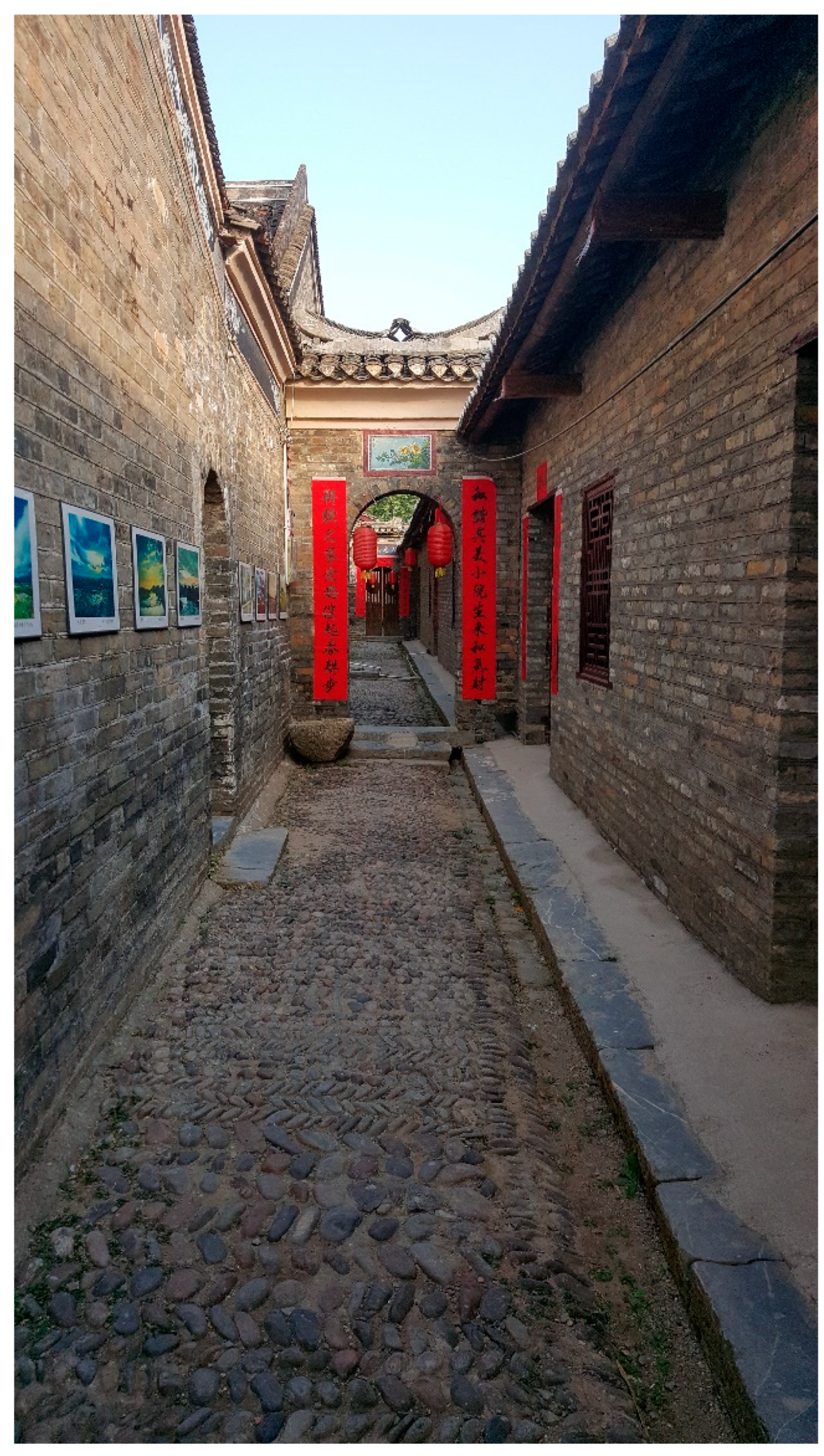
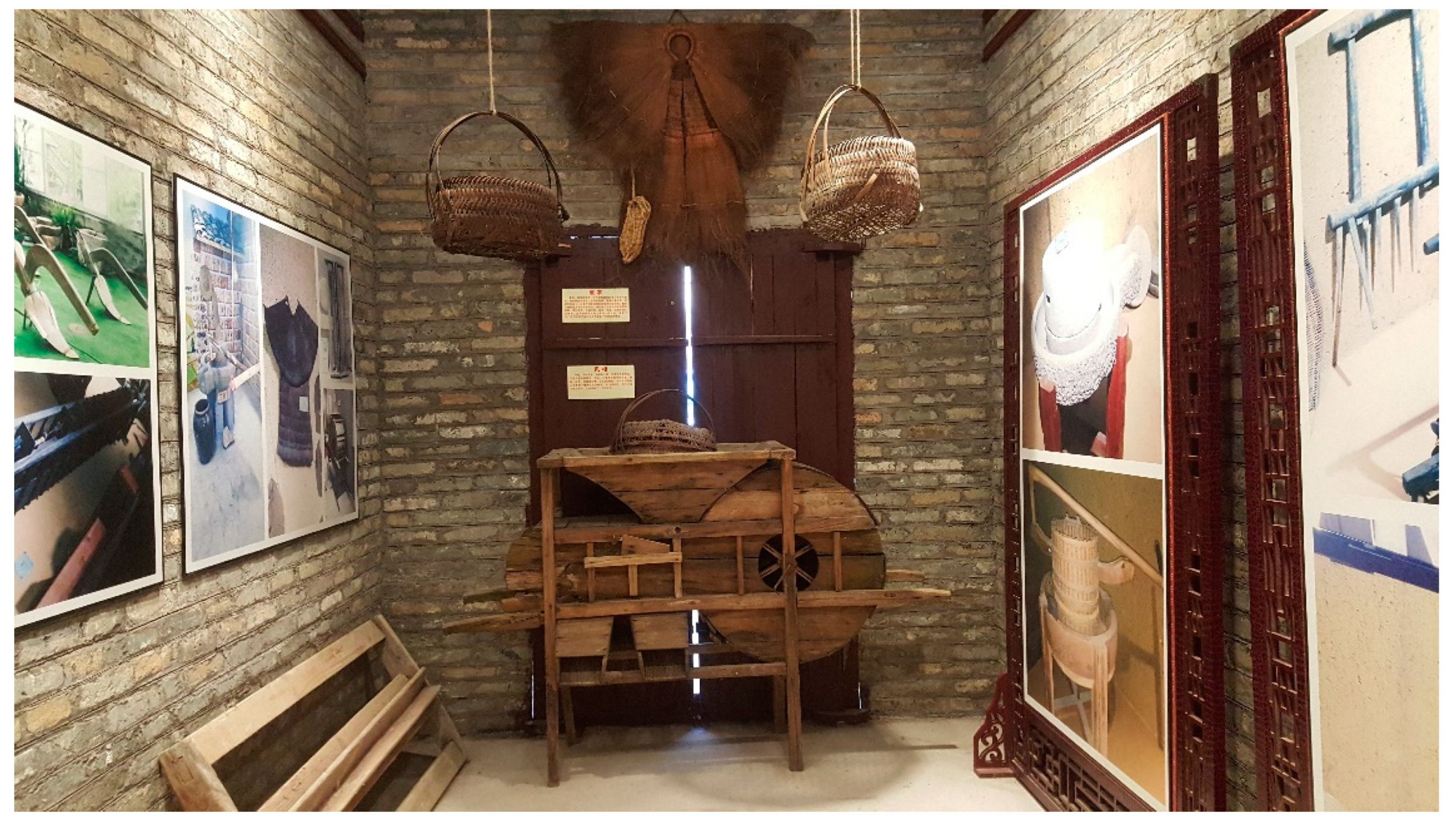
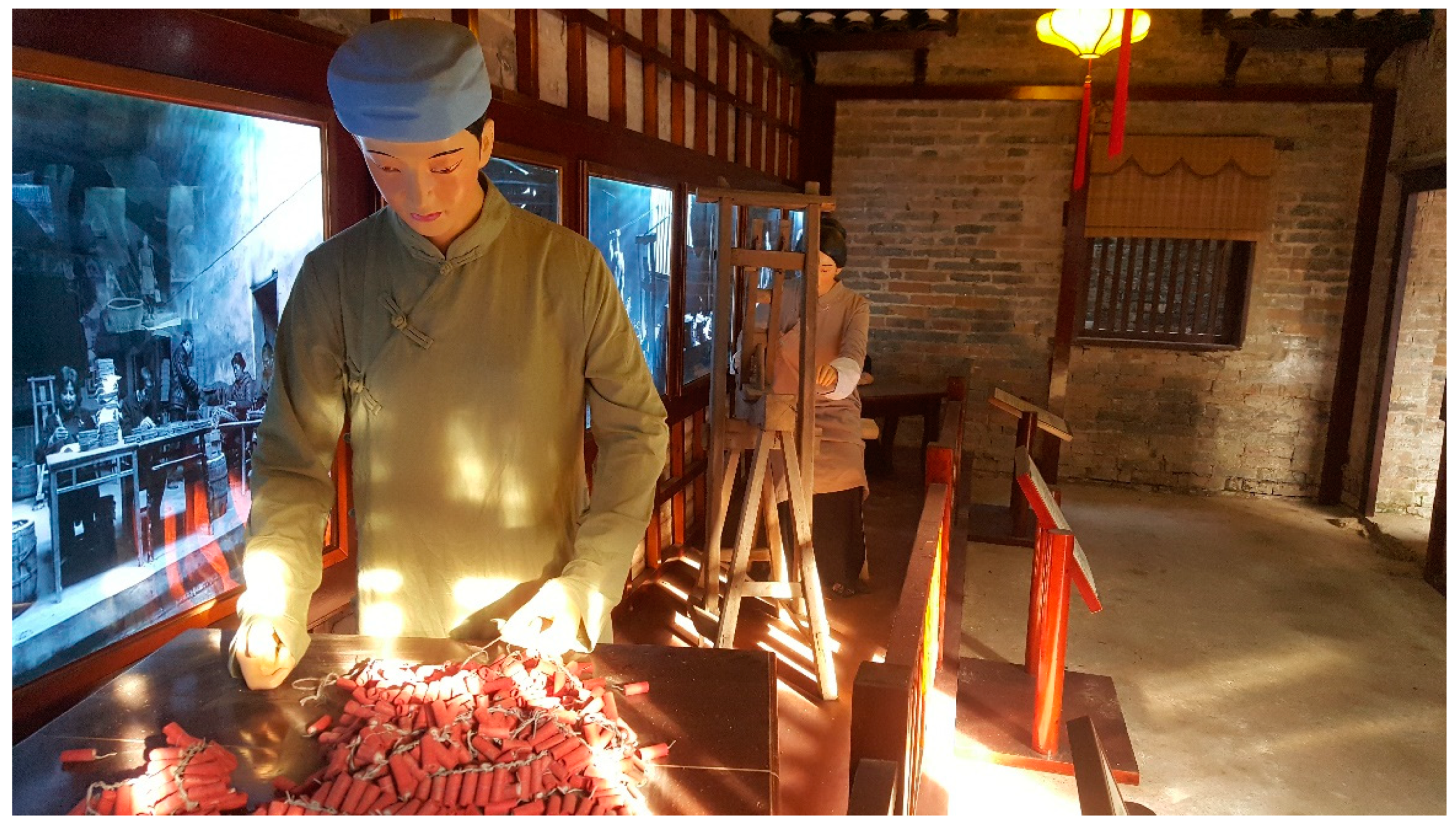
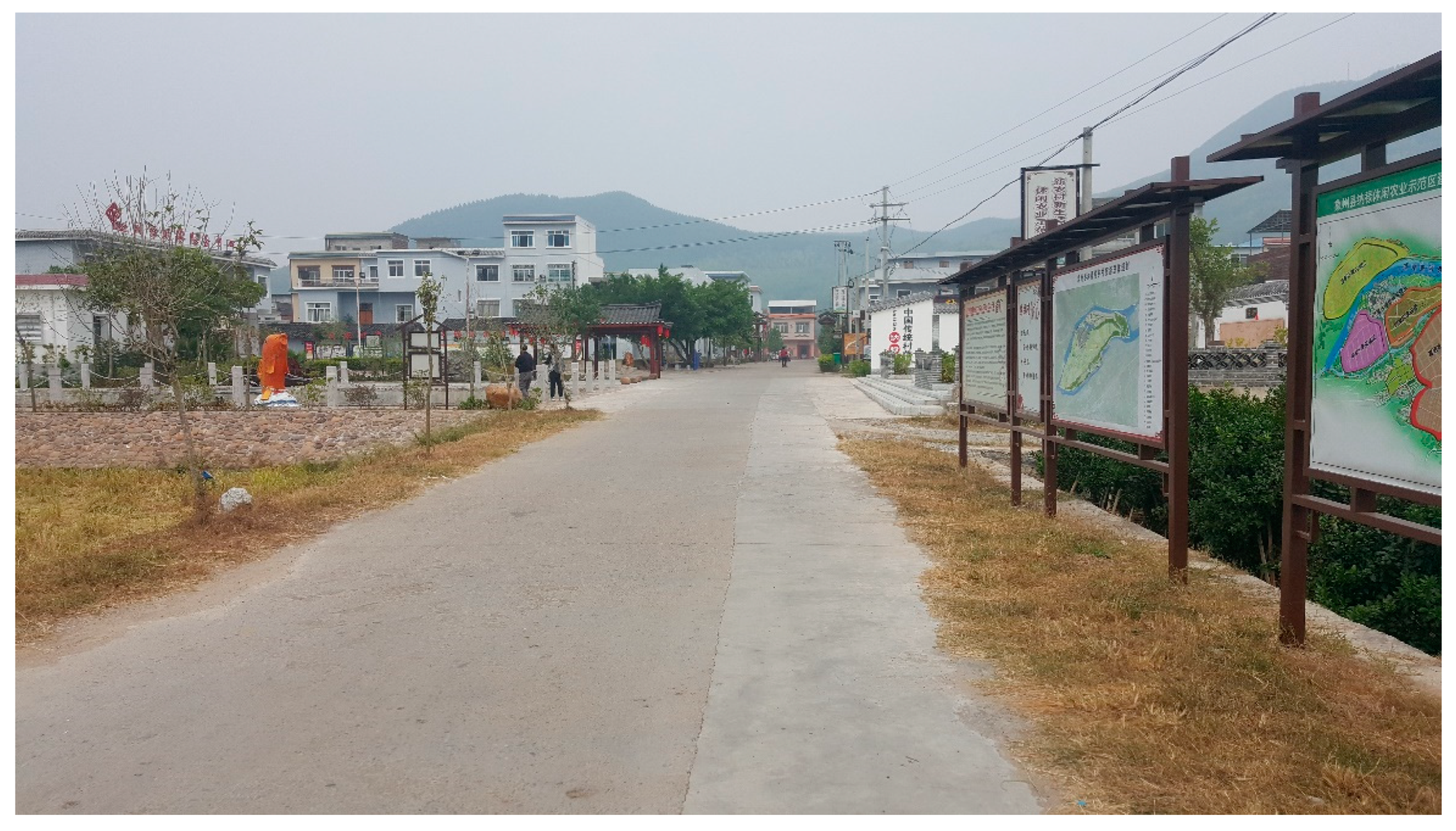




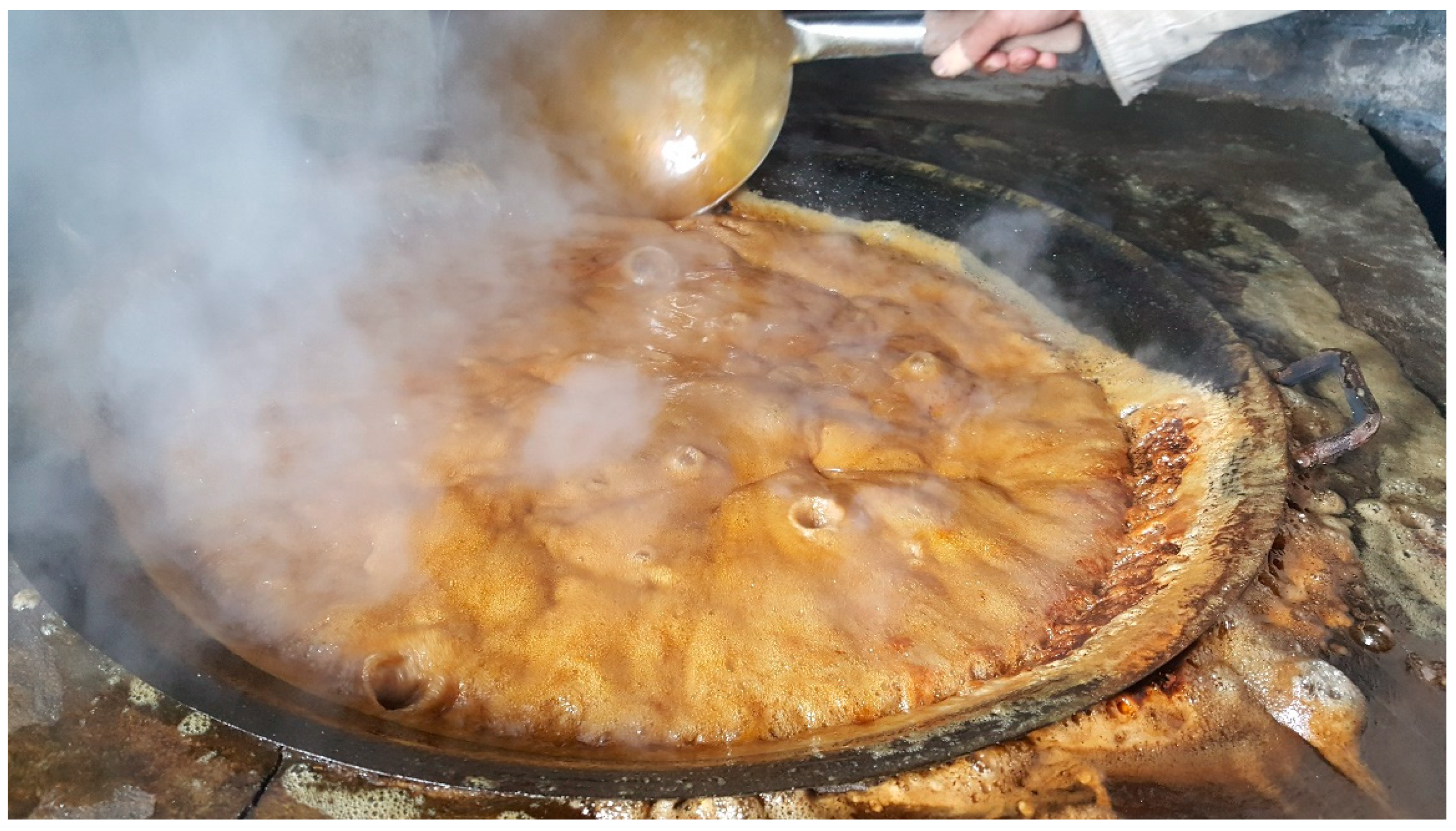
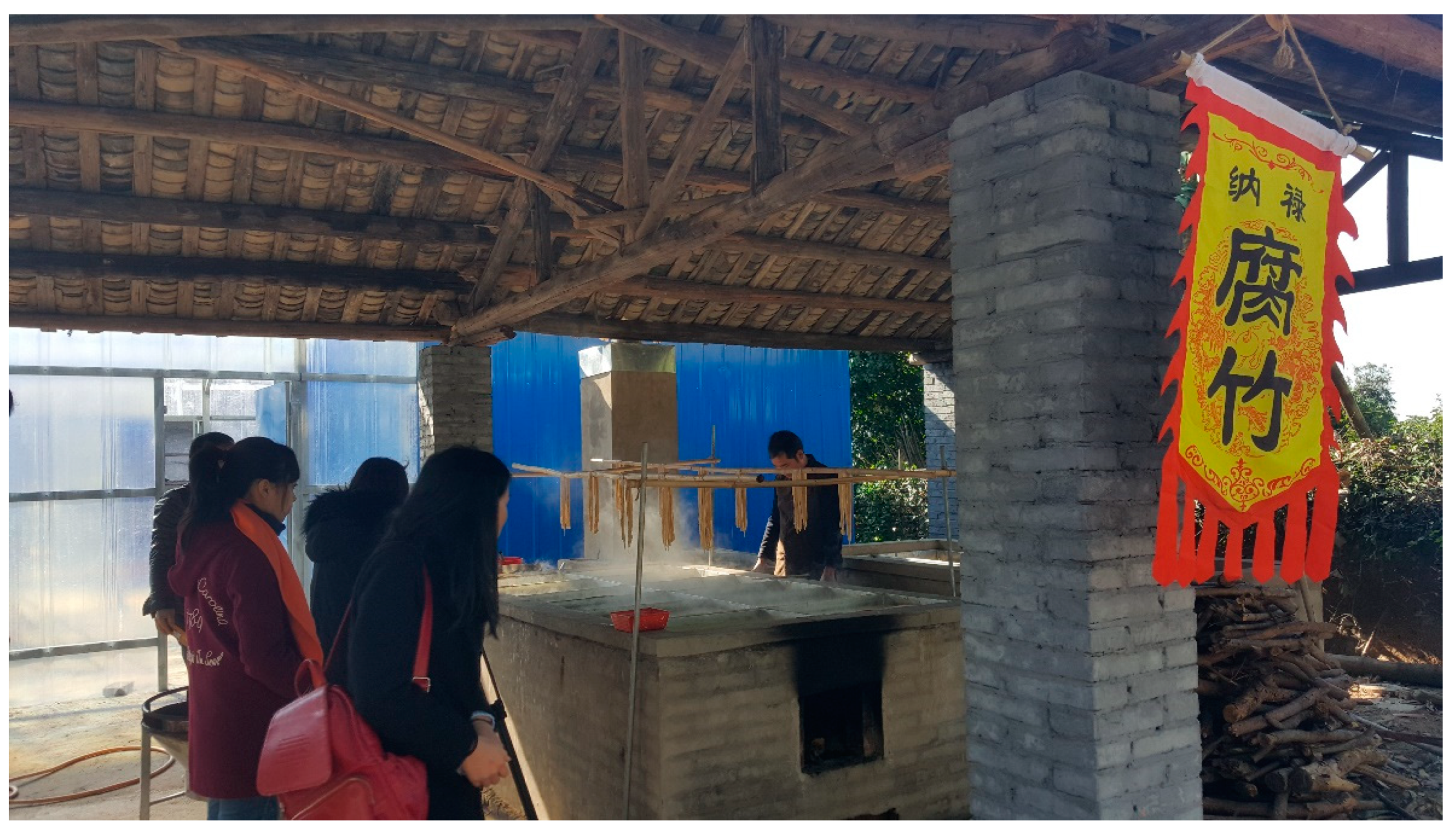
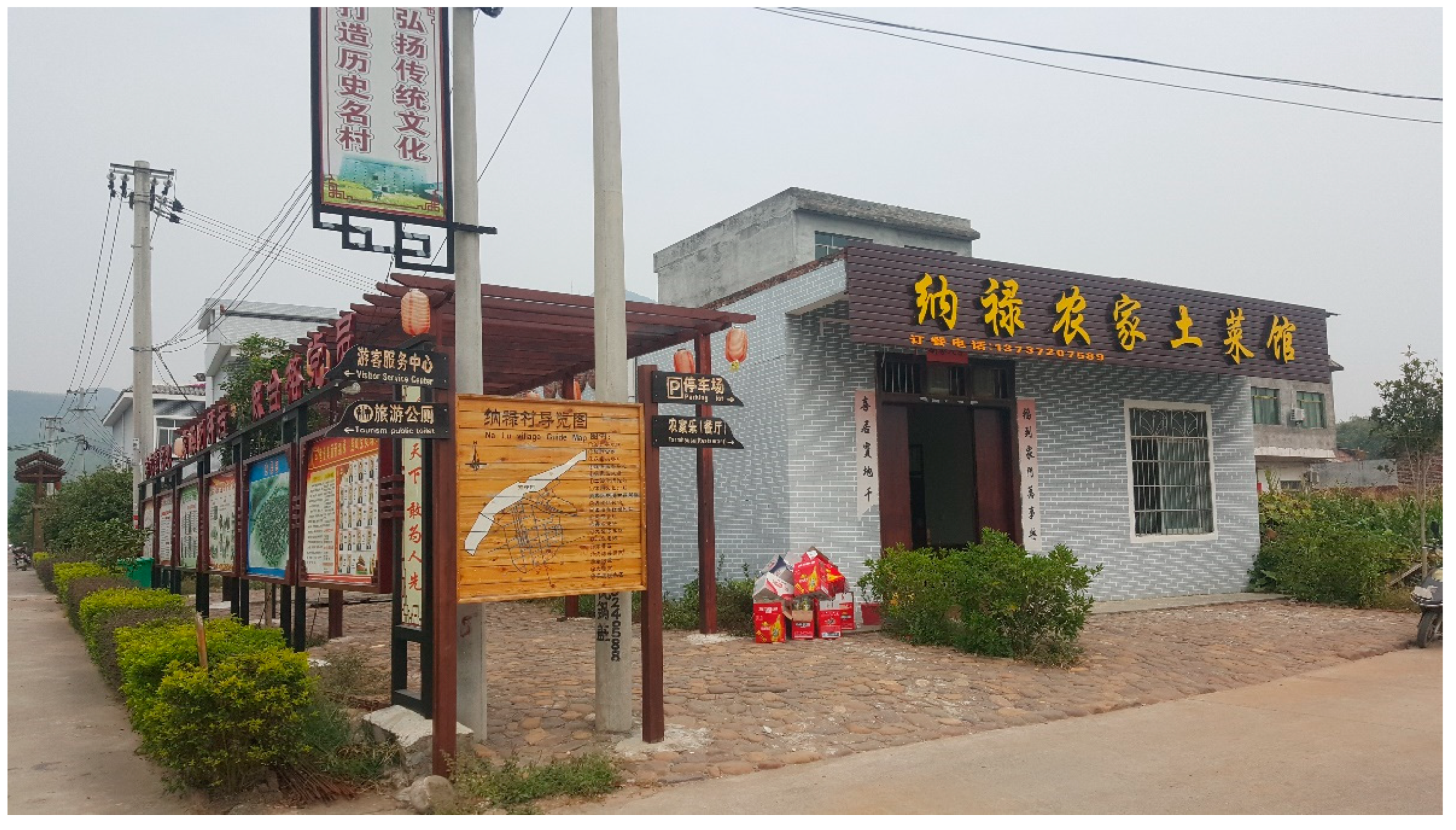
Publisher’s Note: MDPI stays neutral with regard to jurisdictional claims in published maps and institutional affiliations. |
© 2021 by the authors. Licensee MDPI, Basel, Switzerland. This article is an open access article distributed under the terms and conditions of the Creative Commons Attribution (CC BY) license (http://creativecommons.org/licenses/by/4.0/).
Share and Cite
Qin, R.J.; Leung, H.H. Becoming a Traditional Village: Heritage Protection and Livelihood Transformation of a Chinese Village. Sustainability 2021, 13, 2331. https://doi.org/10.3390/su13042331
Qin RJ, Leung HH. Becoming a Traditional Village: Heritage Protection and Livelihood Transformation of a Chinese Village. Sustainability. 2021; 13(4):2331. https://doi.org/10.3390/su13042331
Chicago/Turabian StyleQin, Rui Jun, and Ho Hon Leung. 2021. "Becoming a Traditional Village: Heritage Protection and Livelihood Transformation of a Chinese Village" Sustainability 13, no. 4: 2331. https://doi.org/10.3390/su13042331
APA StyleQin, R. J., & Leung, H. H. (2021). Becoming a Traditional Village: Heritage Protection and Livelihood Transformation of a Chinese Village. Sustainability, 13(4), 2331. https://doi.org/10.3390/su13042331





